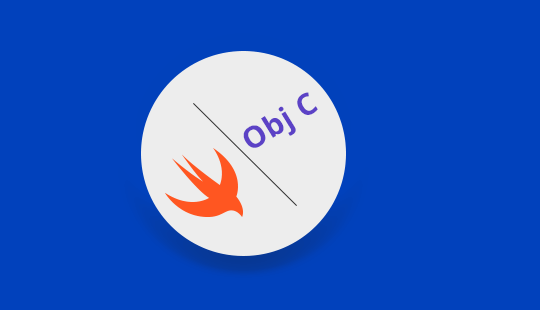Background:
Objective-C and Swift are the programming languages used for iOS app development. Objective-C was initially made by a company called Stepstone in 1980s and this language later on got branded with Apple Inc. Since then, it has been the main programming language for iOS and other Apple platforms.
In 2014, Apple Inc. introduced Swift as an alternative to Objective-C because of its much simpler coding style and syntax that can be easily understood even by new programmers. The app developers can also use Swift together with Objective-C while using Cocoa and Cocoa Touch frameworks in iOS, OS X, watchOS and tvOS development respectively.
Moreover, Swift comes with more powerful tools required for app performance and safety.
At present, the number of experienced iOS app developers using Swift has increased a lot as compared with those experienced in Objective-C. Still, it is necessary to know about the advantages and disadvantages of both these languages so that the new mobile app developers can confidently choose one of them to pursue a successful career in the field of iOS app development.
First, let’s have a look at the scope of Objective –C.
Objective-C: Pros & Cons-When To Use:
Pros:
Stability & Compatibility:
Objective-C is certainly reliable and there are a lot of well-tested apps that are built using Objective-C. There are regular updates in the versions of Swift because it is newer. On the other hand, there are no version updates in Objective-C and it is also easily compatible with the object-oriented C++ while Swift is not compatible.
Cons:
Harder Syntax & Time Consuming:
The coding syntax and memory management in Objective-C are more complex as compared with other programming languages. So programming in Objective-C is more time consuming and difficult for new programmers to learn. So the number of Objective-C developers has decreased a lot as new iOS app developers are learning Swift.
When To Use Objective-C:
- If a massive app has already been developed in Objective-C using C or C++ third-party frameworks and requires some modification then this would be possible only by using Objective-C.
- Objective-C is Application Binary Interface (ABI) stable i.e. easily facilitates connecting of all elements with machinery code. For example, its PSPDFKit framework is used to handle PDF Swift is not ABI stable.
Read more : How to Improve your Business by enabling Technology to the Core?
Merits of Swift over Objective-C:
Code Clarity & Safety:
The code in Objective-C is divided into two blocks which are
header (interface) files (.h)
Implementation files (.m)
Whereas in Swift there is only one file for both interface and implementation. It is more convenient to develop iOS mobile apps using Swift because of clarity of syntax and the implementation requires fewer code lines as compared with Objective-C. Swift comes with enhanced features and the apps developed in Swift are less prone to bugs so it is safer.
Speed And App Performance
A complex object in Swift runs much faster than in Objective-C. Moreover, there are dynamic libraries in Swift which easily allow any kind of update to the newer version of the language. These libraries are actually executable codes that are loaded directly to the memory, optimizing the app original size which gives Swift a leading edge in app performance.
Open Source Language
Swift was initially built for Apple platforms like iOS, tvOS, and OSX but it became open source language in 2015 enabling programmers to use its full potential with other platforms. This also helped developers to make the required third-party frameworks. So Swift has better scope to build much more evolved code architecture and it can also be used as a scripting language which is not possible with Objective-C.
Interactive Coding Style
Swift Playgrounds are the tools that enable programmers to test the code without compiling or building the whole app. Playgrounds visualize data allowing developers to immediately check & correct the code for bugs. By using Xcode IDE in Swift, programmers get a bigger space for experiments in the form of an editor that includes a panel with lines and images. so Swift is also an interactive language.
Read more : How To Develop A mobile App With No Experience
Swift is Easily Readable
The code in Swift is easy to write and it takes less time to check the code. It requires much fewer lines of code for the same feature in Objective-C. The symbols used in Swift are in according to programmer’s convenience.
For example, [] symbol is for function calls in Swift while it is [[]] in Objective-C making it more twisted. Every line in Objective-C should end with a semicolon, but it is optional in Swift and can be excluded.
Conclusion:
iOS app development using Objective-C has been for 20 years and despite its large codebase, a large number of apps have been maintained in Objective-C. The iOS app developers have switched from Objective-C to Swift because Swift comes with better tools and properties. For new iOS app developers, learning Swift is highly recommended.

